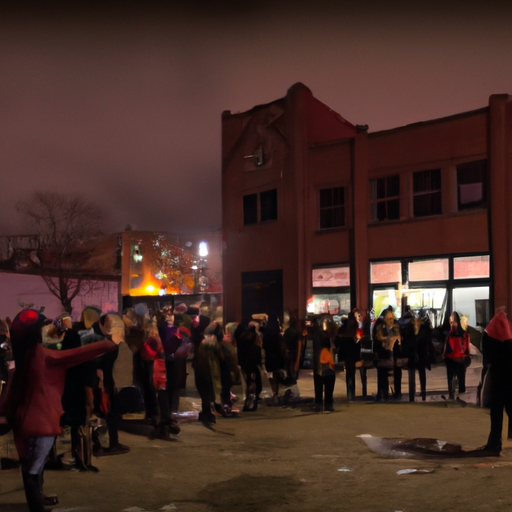The Gripping Opioid Crisis in Canada: A Memorial Unveils the Alarming State
In my ongoing effort to bring attention to the opioid crisis ravishing our nation, my choice of a sober reflection for today comes from Elgin Street Mission’s memorial service, honouring victims of the opioid epidemic in Sudbury, Northern Ontario. The news piece, reported by CTV News, shines a stark light on the magnitude of the crisis and emphasizes the urgent need for effective solutions.
An Epidemic of Devastation
The opioid crisis has cast a grim shadow over Canada, with ripples of its devastating effects echoed in the rising numbers of overdoses, deaths, and its devastating mark on the homeless community. A symbol of this sombre reality was the memorial service held at the Elgin Street Mission in Sudbury, honouring the lives lost in the opioid crisis – a reflection of the grave and growing reality confronting our nation. In their annual gathering of mourners, the Mission brought together families, friends, and acquaintances, marking another year steeped in the brutal aftermath of opioid addiction.
Efforts to Combat the Crisis
Amid the surge of opioid addiction, various organizations and government bodies are stepping up efforts to address the issue. In the article, the narrative unfolds around two significant steps – naloxone distribution and opioid class action. The role of naloxone, a medication designed to rapidly reverse opioid overdose, is becoming increasingly vital in this uphill battle. However, while its provision might bring interim relief, it is far from a sustainable or comprehensive solution to the opioid crisis.
On the more wide-ranging front, the opioid class action represents a substantial effort against pharmaceutical organisations who played an undeniable role in the current crisis. By holding these companies accountable, the opioid class action aims to reshape the landscape of opioid consumption and marketing, addressing the issue at its roots.
Key Points: A Broader Look at the Opioid Crisis
In discussing the implications of the opioid crisis, below are a few notable points:
- The tragedy is palpable, especially among the homeless community. The opioid crisis always strikes hardest in the most vulnerable populations, and the rates of homelessness often reflect this demography.
- Naloxone, while serving as a life-saving tool, is not a panacea. Its distribution, therefore, should not be seen as the primary solution, but rather a desperate stop-gap requiring a more targeted and sustainable follow-through.
- The opioid class action reflects a powerful move towards addressing the roots of the opioid crisis. Targeting pharmaceutical companies can serve as a deterrent to deceptive marketing practices, playing a pivotal role in curbing opioid addiction.
- Despite the ongoing efforts, the crisis continues to escalate, leading to a surge in crime rates. Drug-related crimes and violence are direct offshoots of the opioid crisis, underscoring the multifaceted challenges we face.
Conclusion: A Crisis Mandating Collective Action
In conclusion, as the opioid crisis in Canada continues to escalate, it unmasks our societal weaknesses and areas in need of urgent attention. The victims honoured at Elgin Street Mission’s memorial service are a sober reminder of the human lives being lost in the grip of this devastating epidemic. Therefore, it is incumbent upon us, as civic and community leaders, to expedite efforts, harness resources, and collaborate to usher in far-reaching and sustainable solutions.
Combating the opioid crisis demands focusing on prevention strategies, healthcare improvement, responsible marketing practices by pharmaceutical companies, and destigmatizing addiction. Therefore, let the poignant faces behind the statistics underscore the urgency of our task – to spare no effort in turning back the tide of the opioid crisis in Canada. Indeed, as the opioid crisis threatens to deepen the chasms in our society, let it instead galvanize our collective commitment to resolve, resilience, and recovery.
